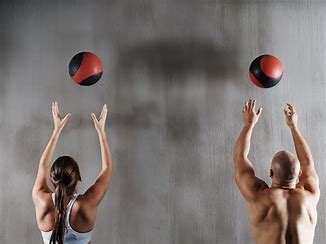
🏐 The Power of Hand-Eye Coordination: Exercises That Train Your Brain and Body
Introduction
Hand-eye coordination is a fundamental skill that connects your visual input with your physical response. It allows you to process what you see and translate it into precise, timed movement—whether it’s catching a ball, typing on a keyboard, or making a fast play on the field.
While often taken for granted, hand-eye coordination is a critical component of both athletic performance and everyday function. Fortunately, it’s not a static ability—through specific exercises like juggling, dribbling drills, reaction ball work, and playing catch, anyone can improve this skill significantly.
Why Hand-Eye Coordination Matters
Hand-eye coordination is essential across a wide range of activities:
- In sports, it affects your ability to hit, throw, catch, pass, and react.
- In daily life, it’s used for driving, cooking, writing, and using tools or devices.
- For children, it helps develop motor skills and cognitive processing.
- For older adults, maintaining coordination supports independence and reduces fall risk.
At its core, good hand-eye coordination is the result of efficient communication between the eyes, brain, and muscles. The faster and more accurately this system works, the better your performance in both mental and physical tasks.
How These Exercises Improve Coordination
Let’s break down why exercises like juggling, playing catch, dribbling drills, and reaction ball training are so effective:
🔄 1. Juggling
- Requires simultaneous tracking of multiple objects.
- Enhances peripheral vision, reaction time, and fine motor skills.
- Builds concentration and bilateral coordination (using both sides of the body together).
🧠 Neurological Benefit: Strengthens neural pathways between the visual cortex and motor centers in the brain.
🥎 2. Playing Catch
- Encourages timing, depth perception, and reflexive movement.
- Can be progressed with different objects (balls, frisbees) or hand patterns (one-hand, alternating hands).
🧠 Cognitive Benefit: Boosts focus and predictive timing by forcing the brain to estimate trajectory and speed.
🏀 3. Dribbling Drills (Basketball, Soccer, etc.)
- Builds visual tracking and spatial awareness.
- Combines rhythm, hand/foot control, and reactive movement.
🧠 Motor Skill Impact: Enhances motor planning and dynamic coordination under pressure.
⚡ 4. Reaction Ball Training
- Uses a ball with unpredictable bounces to improve reflexes and reaction speed.
- Trains quick decision-making and fast-twitch muscle response.
🧠 Neurological Edge: Forces rapid visual processing and motor correction in real time.
Additional Coordination Drills You Can Try
- Wall toss with a tennis ball: Use alternating hands or add a clap between catches.
- Balloon taps: Keep a balloon in the air using hands or a paddle—great for kids or seniors.
- Speed ladder drills with a tennis ball: Do footwork drills while tossing and catching a ball.
- Video games or VR coordination trainers: Certain games can challenge visual reaction speed and precision.
Benefits of Hand-Eye Coordination Training
✅ Boosts Athletic Skills
- Better timing for swings, passes, shots, and defense.
- Faster and more accurate responses during gameplay.
✅ Enhances Cognitive Function
- Increases focus, concentration, and decision-making speed.
- Improves working memory by integrating sensory input with physical action.
✅ Prevents Injury
- Reacting quickly can help prevent collisions, falls, or awkward landings.
✅ Supports Lifelong Function
- From childhood development to healthy aging, coordination training keeps the brain and body in sync.
Conclusion
Hand-eye coordination is much more than just a sports skill—it’s a vital part of how we function in the world. Through fun, accessible exercises like juggling, dribbling, catching, and reaction drills, we can sharpen our brain-body connection, improve performance in sports, and stay agile in daily life.
By training hand-eye coordination, you’re not only becoming more athletic—you’re literally rewiring your brain for better focus, faster reflexes, and greater control. Whether you’re an athlete, coach, parent, or someone just looking to improve brain health, these drills are simple but powerful tools that bring real results.
